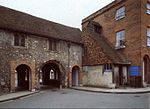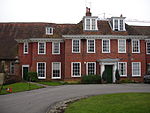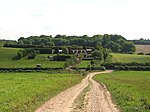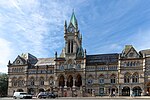St Swithun-upon-Kingsgate Church
Church of England church buildings in HampshireChurches in WinchesterGrade I listed churches in HampshireHistory of WinchesterUse British English from July 2019

St Swithun upon Kingsgate is a Church of England church in Winchester, Hampshire, England, built in the Middle Ages in the Early English style. Located above the medieval Kingsgate, one of the principal entrances to the city, the church is unusual in forming a part of the fabric of the old city walls. St Swithun's first appears in 13th century records, and under the fictional name of St Cuthbert's, is mentioned in Anthony Trollope's novel The Warden.
Excerpt from the Wikipedia article St Swithun-upon-Kingsgate Church (License: CC BY-SA 3.0, Authors, Images).St Swithun-upon-Kingsgate Church
St Swithun Street, Winchester The Close
Geographical coordinates (GPS) Address External links Nearby Places Show on map
Geographical coordinates (GPS)
| Latitude | Longitude |
|---|---|
| N 51.059166666667 ° | E -1.3144444444444 ° |
Address
Saint Swithun upon Kingsgate
St Swithun Street
SO23 9JP Winchester, The Close
England, United Kingdom
Open on Google Maps










